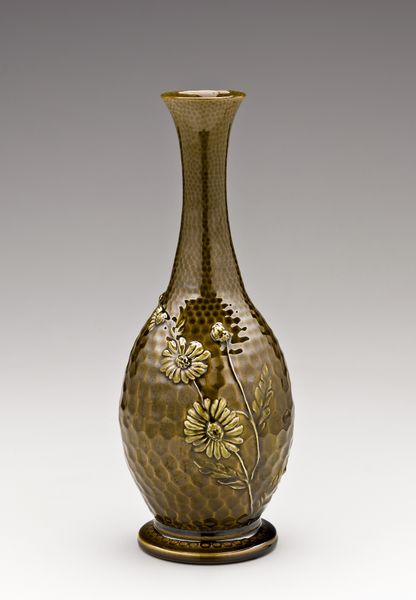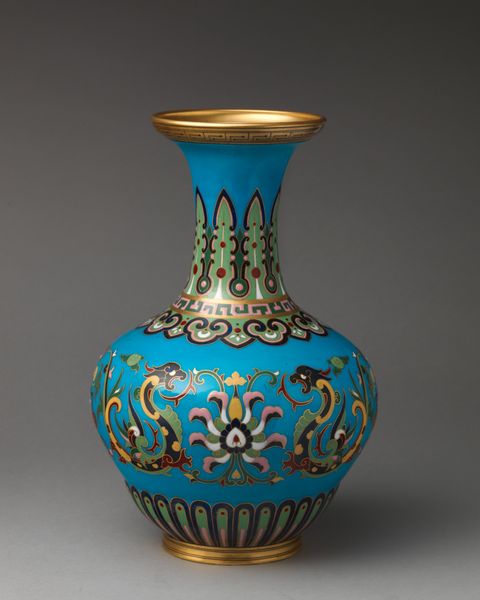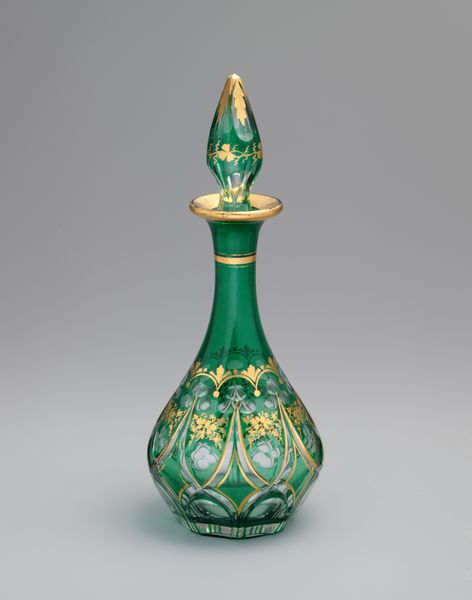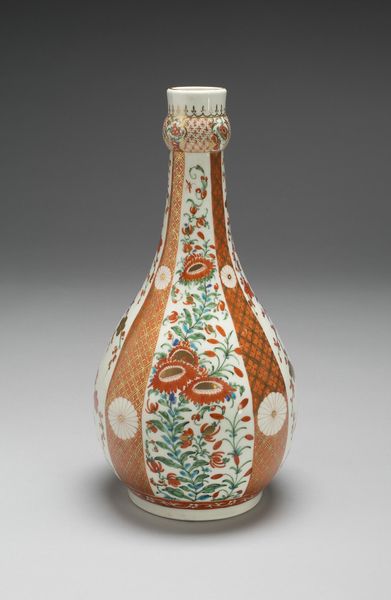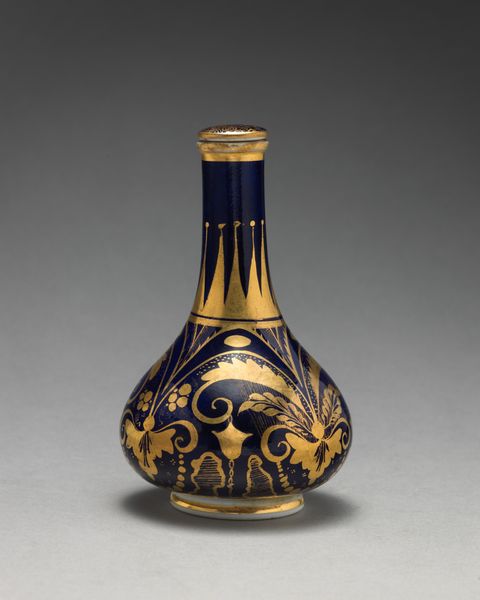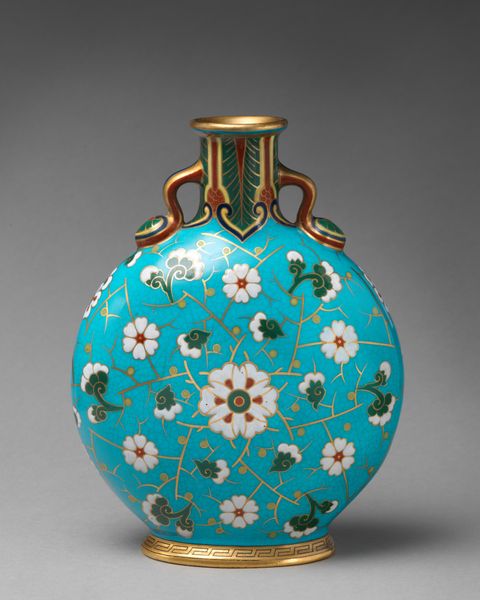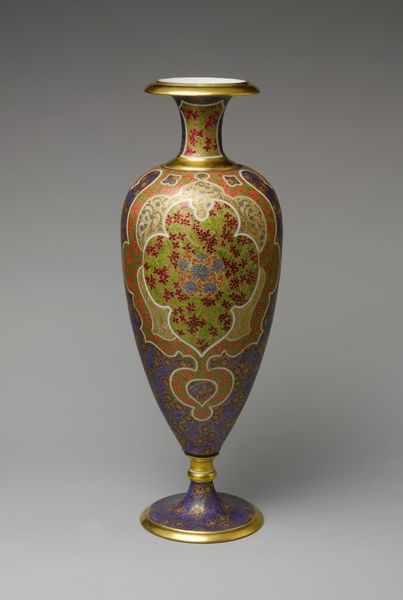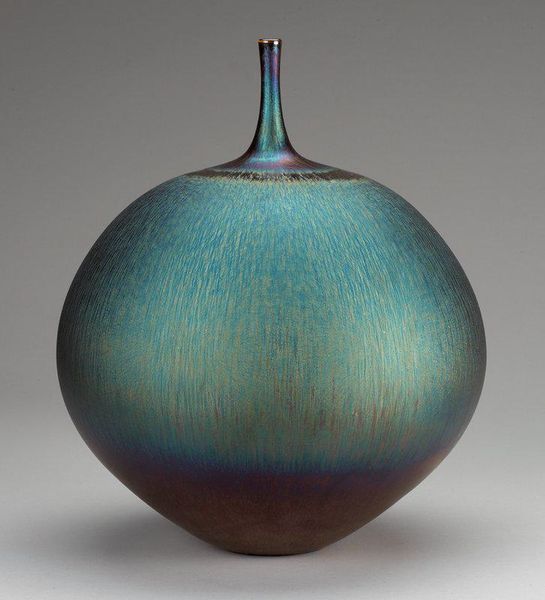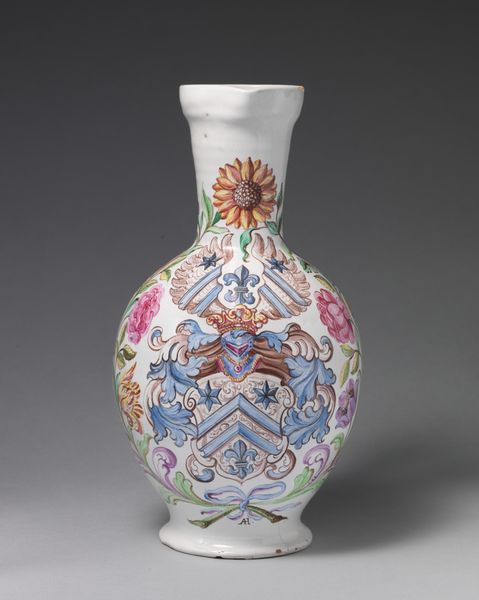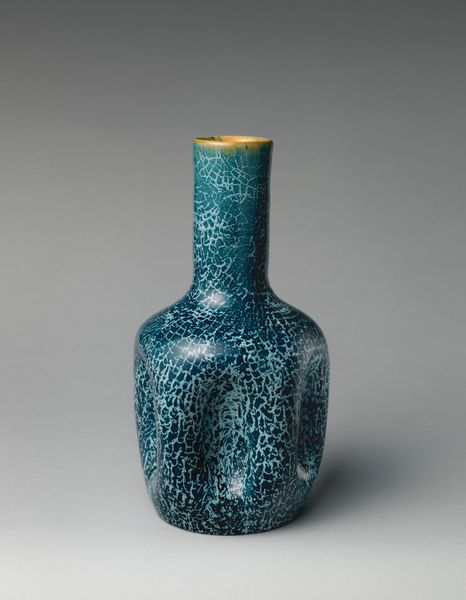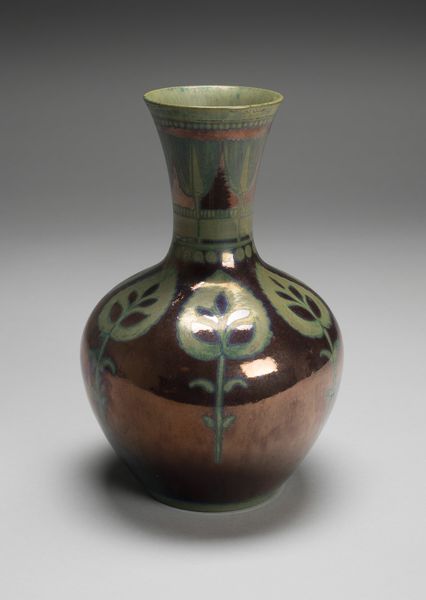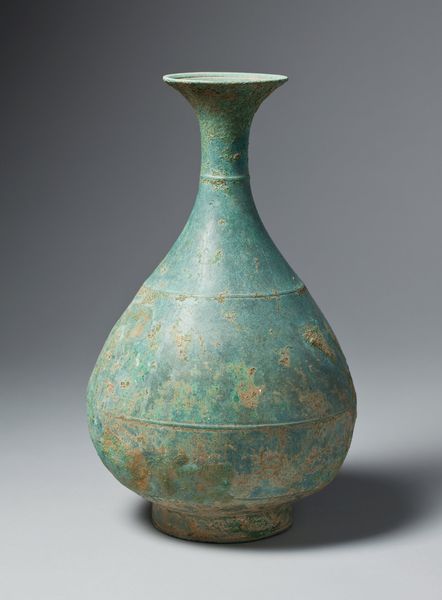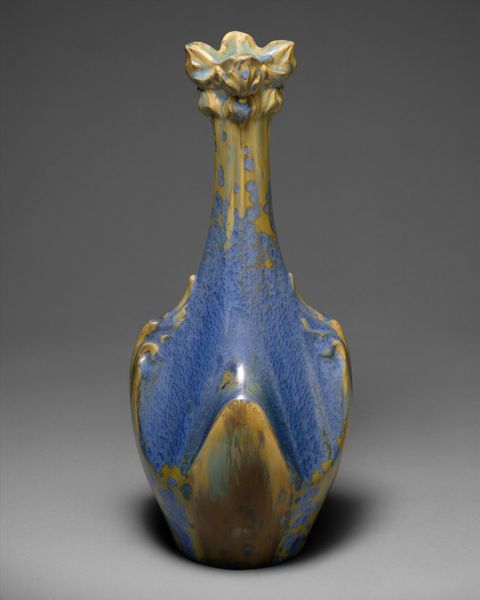
Dimensions: confirmed: 7 5/8 × 3 1/2 × 3 1/2 in. (19.4 × 8.9 × 8.9 cm)
Copyright: Public Domain
Editor: Here we have a porcelain bottle made by Minton(s), sometime between 1855 and 1875. The blue and green geometric patterns are quite striking. How would you approach this piece? Curator: Let’s think about the process. The repeated geometric design on the porcelain surface signals an interest in mass production and a potentially broader market for decorative objects, compared to unique, hand-painted artworks. Editor: So, you’re saying its creation was influenced by the Industrial Revolution? Curator: Absolutely. The level of detail and the delicate material points to skilled craftsmanship. The ceramic and porcelain suggests the availability of these materials, potentially linking it to colonial trade routes and exploitation of labor in source regions. Editor: I see what you mean! How does the decoration play into this? Curator: The art nouveau influences complicate things further. Its delicate curves and floral motifs create an aesthetic appeal, seemingly divorced from the harsh realities of industrial labor. What purpose might this contrast serve? Editor: It’s like a pretty facade, perhaps designed to conceal the object's connection to broader socioeconomic conditions? Is that deceptive? Curator: It prompts us to look at the work involved, not just the aesthetic qualities. We must remember it could be about refinement as well as commerce. Editor: That is true, this has broadened my views beyond initial appeal to also consider the socioeconomic and material conditions surrounding this bottle's creation. Curator: Likewise. Looking beyond the aesthetics helps us understand these artworks through a broader lens, looking at labor and commerce instead of solely style.
Comments
No comments
Be the first to comment and join the conversation on the ultimate creative platform.
